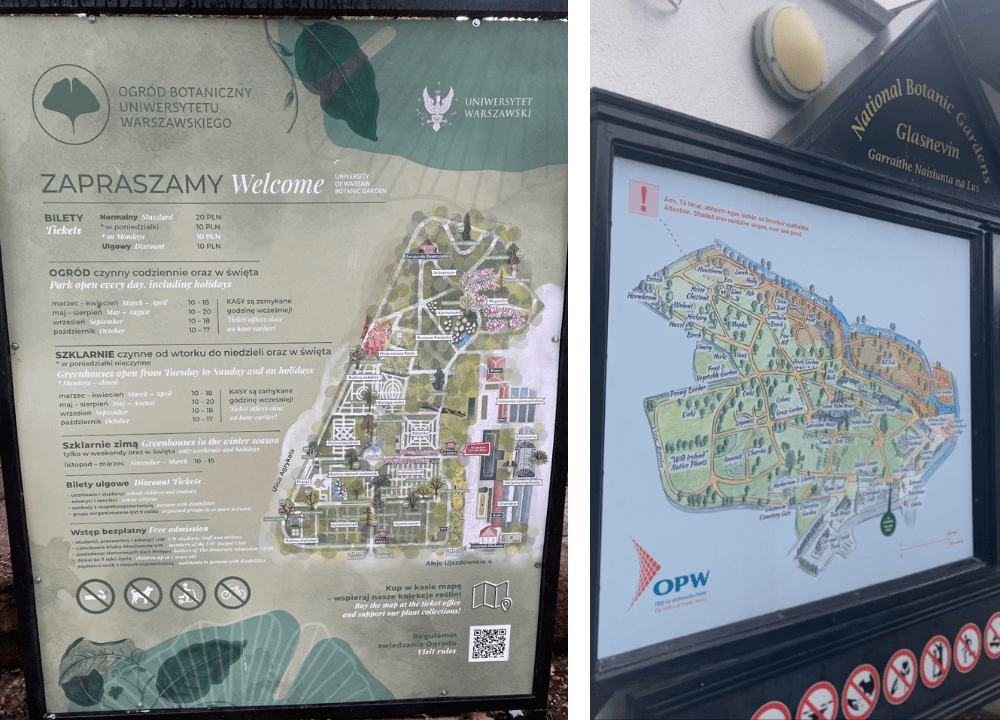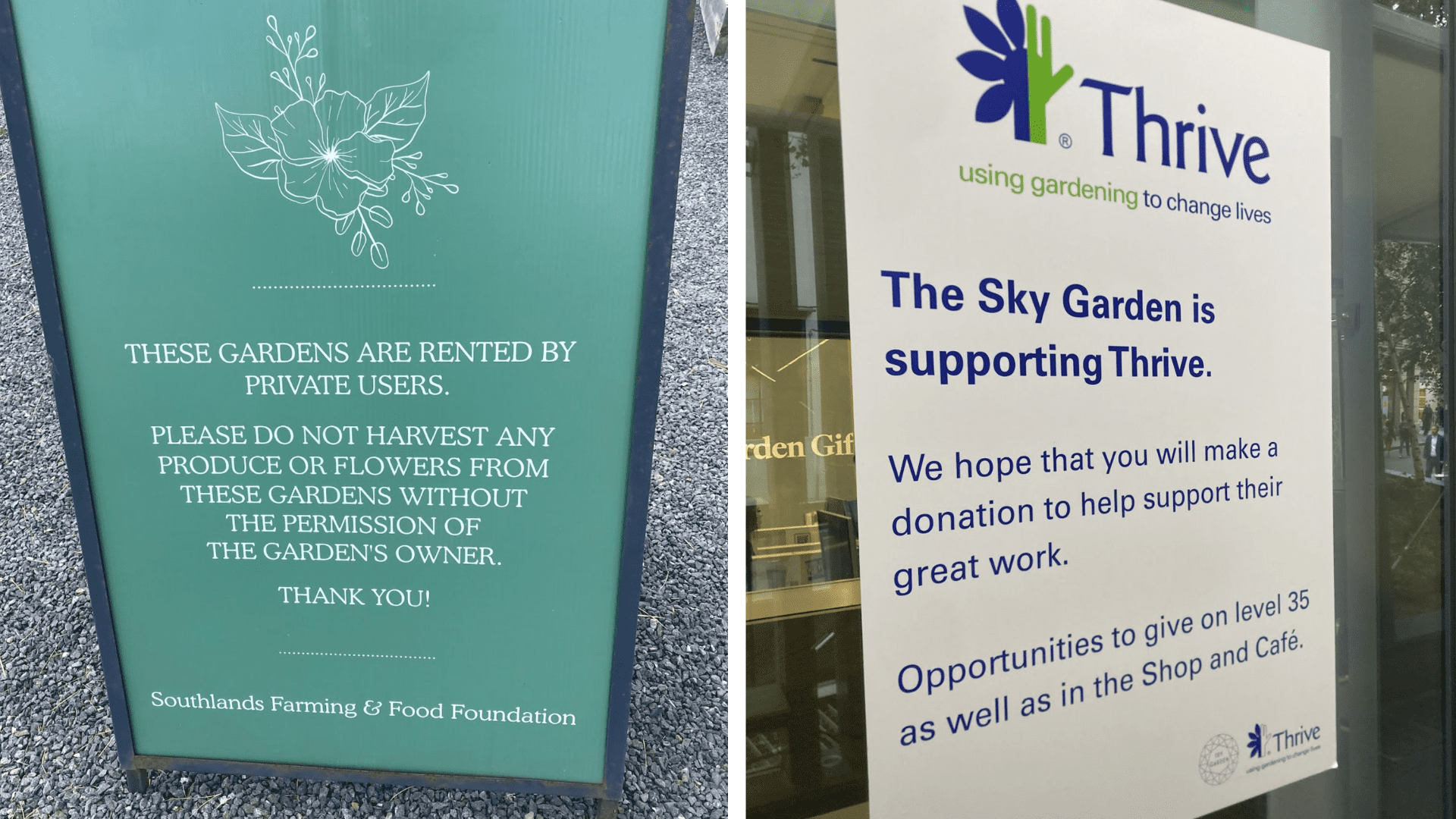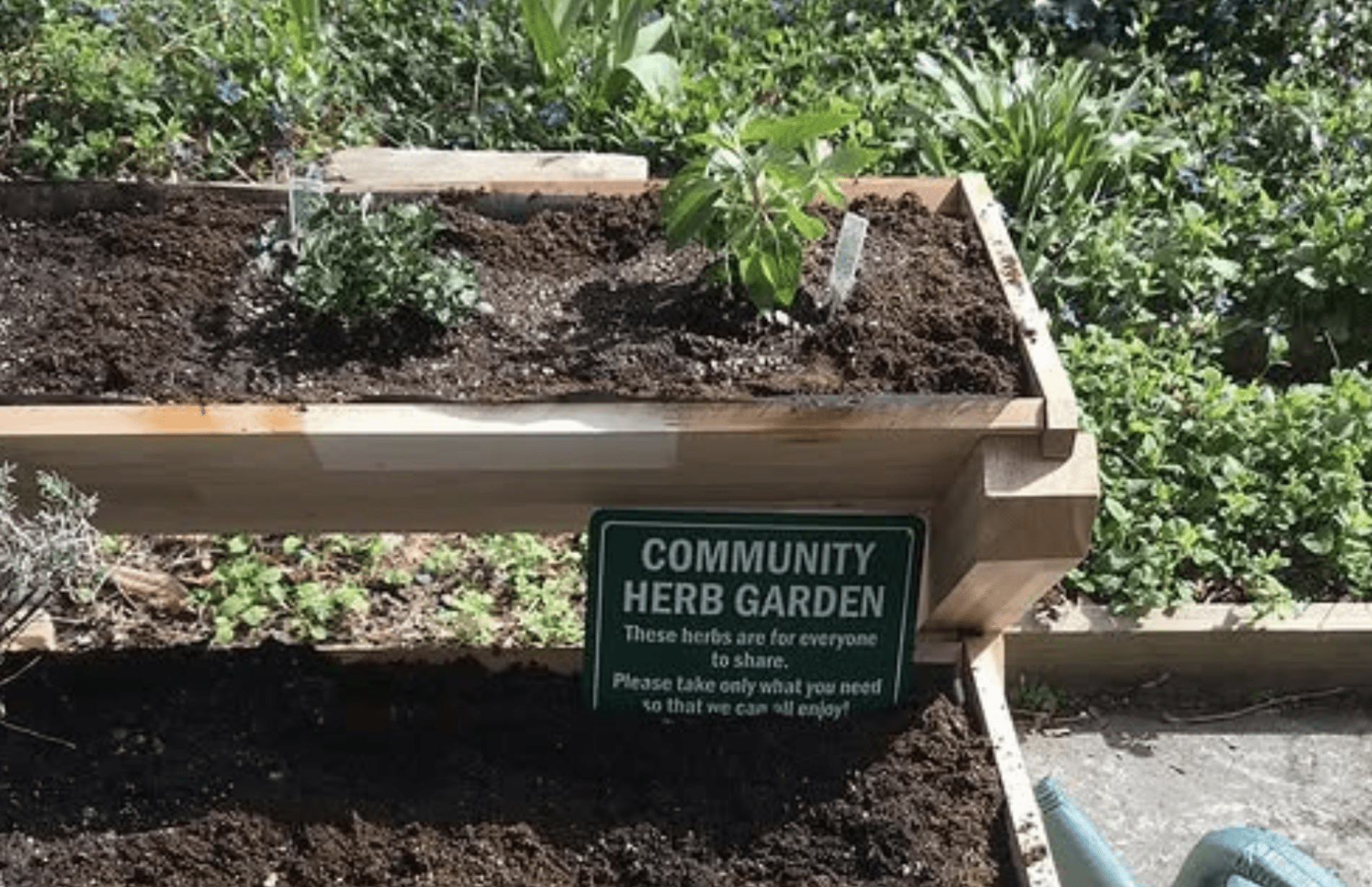Garden signs play a key role in fostering the connection between people and plants, while also enhancing the overall experience of garden users and visitors. From wayfinding signs that offer direction to plant identification signs that spark learning and curiosity, garden signage can promote engagement, accessibility, safety and therapeutic outcomes.
Below, we explore various types of signs to consider adding to your therapeutic garden, along with examples and information about their purpose and benefits. Throughout the blog, we also share tips on how to create and maintain these signs effectively.
Table of Contents
1. Wayfinding Signs
In a therapeutic garden, wayfinding signs provide clear, simple cues to help people find their way, pointing out paths, destinations, and features to aid movement and orientation throughout the space.
For example, the American Society of Landscape Architects recommends that, “Signage should be located throughout the garden to indicate the location of the nearest restroom to ensure quick access when the need arises.”
Other examples of wayfinding signs include “Entrance” or “Exit” signs and directional arrows on a pathway. Wayfinding signs are important because they support safety, independence and orientation in the garden, especially for people with cognitive or physical challenges. As Ryan and Hill (2022) note, “Investment in wayfinding signage is an important facilitator to greenspace usage,” highlighting the important role these types of signs play for garden users.
2. Place-Making Signs
Place-making signs describe the identity and function of garden spaces, helping visitors understand how an area is used, who it serves and how to engage with it.
For example, a sign that reads, “Community Garden – these plots belong to individual gardeners, please enjoy the garden but do not harvest anything,” clarifies that the plots belong to individual gardeners who tend and harvest them, signaling that visitors should not pick produce from these beds. In contrast, a sign like “Food Forest – Help yourself to ripe fruits and vegetables” communicates a different purpose, inviting community members to harvest freely. Another example might be a sign identifying a space as a “Grief Garden”or “Memory Garden,” encouraging quiet reflection and respectful presence.
Place-making signs are especially important in public or shared gardens, where visitors may not be familiar with the intended uses of different areas. These signs promote meaningful engagement by helping people feel welcomed and informed. They also foster respect for the space and for the people who care for and use it.
Photo Left: This place-making sign provides information about how the garden is used and how you can (and should not) interact with it. Photo by Katie McGillivray
Photo Right: This sign at the Sky Garden in London, UK provides important information for visitors about supporting therapeutic horticulture initiatives at Thrive. Photo by Katie McGillivray
Accessible & Inclusive Garden Sign Tips
Communication & Comprehension
- Use clear, inclusive language; avoid jargon (unless they serve a specific educational or cultural purpose).
- Add symbols (e.g., directional arrows) or simple illustrations (e.g., nose smelling plant like on Shelagh Smith’s signs) to support understanding.
- Translate into languages of garden users.
- Include QR codes for audio access and additional information.
- Co-create signs with participants to reflect shared values and perspectives
3. Plant Identification (ID) Signs
Plant identification signs, labels or markers promote learning and interaction with nature by helping visitors recognize, connect with and deepen their knowledge about the plants in the garden.
As Gabriela Rocha (2018) from the Chicago Botanical Gardens notes, “A [garden] display plant’s name on the label is the first interaction between you, the individual, and the environment.” These signs may be simple, displaying just the common name, or more detailed, offering Latin names, growing tips and historical or cultural context. For example, at the Chicago Botanical Garden, they use the International Code of Nomenclature for Cultivated Plants (ICNCP) which establishes standardized rules for naming and classifying cultivated plants.
In therapeutic gardens, plant ID signs foster curiosity, support memory recall, encourage meaningful engagement and can also promote safety by clearly identifying potentially harmful plants.
Photo Left: Simple plant ID signs handmade on paint sticks offer just the name of the plant and a little drawing of it. Photo by Katie McGillivray
Photo Right: Clear and concise plant ID signage helps visitors connect with the garden at Bloedel Conservatory in Vancouver, BC, Canada. Photo by Katie McGillivray
Photo Left: An example of a more detailed plant ID sign at the National Botanic Gardens of Ireland as part of their Plants for People display. Photo by Katie McGillivray
Photo Right: This innovative Braille sign from a sensory garden in Poland includes a guiding rope that leads a visitor’s hand directly to the referenced plant. Photo by Emilee Weaver
This community herb garden sign also communicates what the garden is and encourages interaction and harvesting. Photo by Katie McGillivray
Accessible & Inclusive Garden Sign Tips
Visual Accessibility
- Use high-contrast colors (e.g., white on dark).
- Keep text simple, large and in sans-serif fonts.
- Mount signs at 48 – 60 inches for standing and seated users.
- Avoid glossy finishes; use reflective or well-lit materials.
- Include braille or tactile text where possible
4. Engagement Signs
In therapeutic gardens, engagement signs provide prompts that invite visitors to interact meaningfully with the space.
For example, Shelagh Smith’s Garden Activity Signs include phrases like “Smell me”, “Touch me” or “Look closer,” using both text and simple images to communicate clearly and inclusively. In horticultural therapy (HT) or therapeutic horticulture (TH), these signs help foster a deeper connection with the garden, promoting both active and passive participation.
Engagement signs are especially important in sensory gardens because they can guide visitors to use specific senses to connect more deeply with the garden. As Worden and Moore (2004) note “Signage is a key element of a sensory garden. Visitors will be more inclined to interact with plants if they are prompted by clear labeling.”
Accessible & Inclusive Garden Sign Tips
Durability and Maintenance
- Use weather-resistant materials (metal, recycled plastic, sealed wood etc.). If making your own signs, use a sealant, like mod podge, to help weatherproof your signs.
- Bring signs indoors during winter months to help protect them.
- Maintain plants around signs to ensure they remain readable.
- Clean signs each season.
5. Just for Fun Signs
These playful signs can add personality and a touch of whimsy to the garden. They can also serve as conversation starters or memory cues, especially valuable in settings supporting mental health or dementia care. Whether through humour (“so excited I wet my plants”) puns (“bee happy”) or uplifting messages (“say yes to new adventures”), they contribute to the overall sense of welcome, community and wellbeing in the garden. While not informative in a traditional sense, these signs help build a sense of belonging, emotional connection and engagement with the space and those who share it.
Photo Right: Puns like Bee Happy, Lettuce Grow, or Thyme to Garden are always welcome in the garden, adding a bit of fun and humour. Photo by Katie McGillivray
Photo Left: Making garden signs with participants is a fun and meaningful way to encourage creativity and self-expression. Photo by Katie McGillivray

By Katie McGillivray, HTR
Course Instructor & Content Advisor
References
American Society of Landscape Architects. (n.d.). Universal design: Gardens. https://www.asla.org/universalgardens.aspx
Harries, B., Chalmin-Pui, L. S., Gatersleben, B., Griffiths, A., & Ratcliffe, E. (2023). Designing a wellbeing garden: A systematic review of design recommendations. Design for Health, 7(2), 180–201. https://doi.org/10.1080/24735132.2023.2215915
Rocha Alvarez, G. (2018, May 16). Why plant labels matter worldwide. Chicago Botanic Garden. https://www.chicagobotanic.org/blog/plant_science_conservation/why_plant_labels_matter_worldwide
Ryan, R. L., & Hill, K. (2022). Public perceptions on the role of wayfinding in the promotion of recreational walking in greenspaces. Journal of Environmental Psychology, 81. https://doi.org/10.1016/j.jenvp.2022.101801
Worden, E. C., & Moore, K. A. (2004). Sensory gardens (ENH981). University of Florida Institute of Food and Agricultural Sciences. https://journals.flvc.org/edis/article/download/112321/107513
Latest from the blog

How Therapeutic Horticulture Supports Social Work: Practical Tools for Clients and Practitioners
Root in Nature will be releasing a series of blogs that explore the intersections of therapeutic horticulture and allied fields. Each piece will highlight how plant- and nature-based practices can support the unique goals of different professions. Social work is the starting point for this series, reflecting the essential role it plays in supporting individuals, families, and communities.
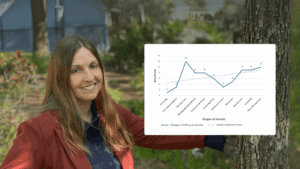
The Practitioner’s Map: Navigating the 9 Stages of Therapeutic Horticulture Program Growth
Starting a therapeutic horticulture (TH) program can feel like planting seeds in unfamiliar soil – filled with anticipation, hope, and, let’s be honest, a bit of uncertainty. Whether you’re developing a new initiative in a long-term care home, school, community space, or healthcare setting, the journey often follows a set of recognizable emotional and operational stages.
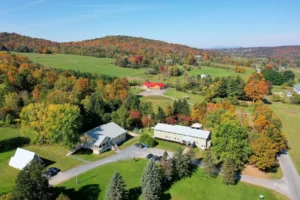
Client Spotlight: Dunham House – Cultivating Patience, Healing, and Community Through Therapeutic Horticulture
Dunham House is a residential treatment facility located on 85 acres in Quebec’s Eastern Townships. It provides a calm, natural setting designed to support adults recovering from mental health challenges and addiction. Through its one-month and six-month dual-diagnosis programs, Dunham House offers evidence-based therapy alongside innovative, nature-based activities, one of the most impactful being its therapeutic garden program, which helps residents build skills, confidence, and connection through hands-on gardening.


